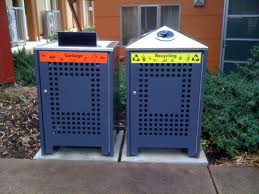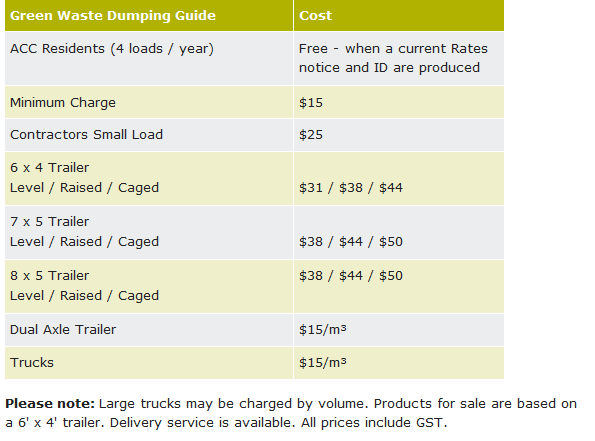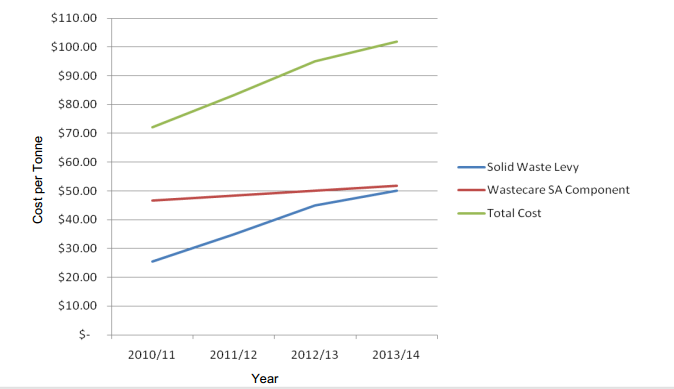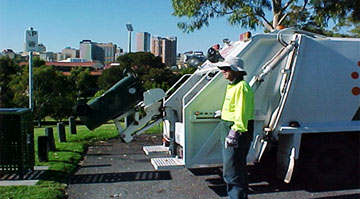Introduction
This paper entails a survey of a recycling center in Australia. The Adelaide Green Waste Recycling Centre conforms to several environmental policies. The institution can be emulated by other refuse reprocessing centers in the world for its sound management practices.
Scenario investigation: The city of Adelaide Green Waste Recycling Centre
The Green Waste Recycling Centre features in the city of Adelaide. The center is along the War Memorial Drive, towards the North of the City. The city of Adelaide has a plan that seeks to recycle about 53% of curbside waste by the year 2015. The town may increase this recycling to about 60% by the year 2020 (Department of Parks and Recreation 2011). It may also transform the performance of debris reprocessing for the company to about 26% (Adler 2009). The town has formulated diverse strategies to maximize waste diversion from landfills through progressive increment of waste recycling approaches. The dimensions may be undertaken through community initiatives. The plan seeks to prepare the city for the urban structure that envisions to have an environmentally compliant Adelaide City in the next 30 years. The city endeavors to increase waste conversion in debris sites and improve the utilization of amenities in a major conservation program (Government of Western Australia 2008).
Facility’s description: The Adelaide Green Waste Recycling Centre
The Adelaide Green Waste Recycling Centre is an initiative of the local government authority of the Adelaide City of Australia. The city covers an area of about 5 square miles including the central business district area. It is one of the oldest municipal council areas in Australia. The main users of the Adelaide Green Waste Recycling Centre are residents of Adelaide city.


Waste management in the Green Waste Recycling Centre
The Adelaide Green Waste Recycling Centre works in close collaboration with the South Australian Government in the field of waste management.
It also coordinates with other councils, industries and metropolitan governing bodies to support the initiative of waste management (Conner 2011). The facility has adopted the use of enhanced waste management services for people and commercial enterprises.
The city has introduced a curb waste bin system for management of wastes and increment of recycling approaches. The authority reclaims about 87% of refuse from merchants in all markets in the city of Adelaide. The program reprocesses raw refuse into various fertilizers that the government sells to farmers. The Green Waste Recycling Centre has appreciated the need to improve waste diversion from landfills and its proper management for environmental sustainability in the town. The center is actively seeking the development of Adelaide as a naturally sustainable city. The recycling center formulates strategies of decreasing waste from the council and the city through reusing waste materials (Concern Worldwide 2012). One can determine whether the waste his or her company generates is acceptable in the facility by assessing whether it meets the green waste criteria. The waste should be re-usable after recycling.
The Green Waste Recycling Centre is appropriate for maximum utilization of waste products transported for reprocessing. It has the appropriate facilities for the management of waste according to Australian standards (Eco. cycle 2010).
Analyses of costs of the Green Waste Recycling Center

Graphical illustration of projected costs of waste management in the Green Waste Recycling Centre.

Innovative waste management practices at the Green Waste Recycling Centre
Currently, the Green Waste Recycling Centre seeks to deliver significant projects to create a modern metropolitan in Adelaide through the 2008-2012 strategic development plan, and the 2009-2012 environmental sustainability plan (Mutz 2011). This study notes tremendous progress in the management of waste in the Green Centre throughout the entire period of the plan. The city undertakes the Recycling-At-City Events initiative to promote a zero-waste policy by the year 2013 (Coley 2013). The city’s program for recovery assumes the form of a 3 bin package that incorporates food waste reprocessing. The other significant initiative of management waste may be done through the Kerbside Waste Collection Service. The city’s community has shown significant participation and an efficient dedication to recycling. The council enables this fact by allowing a substantial rise in the total tonnes of recycling. The center carries out an overall session of garbage transfer that comprises of acceptance, sorting, and storage of the waste (National Emissions Trading Taskforce 2010). The waste management sites undertake the forms of recycling essential resources. This aspect is a clear distinction of the different types of waste to improve the ease of their classification. The waste products range from extremely perilous waste to excess food remains. These resources are acceptable at the site for processing and further recycling (Total Environment Centre 2008).

Recommendations for the Adelaide Green Waste Recycling Centre
This center outlines various recommendations for the minimization of waste in the city of Adelaide. The town has crucial priorities that focus on the delivery of efficient waste management (Australian Bureau of Statistics 2013).
The first priority is the community. The three-bin kerbside system of the city contains specifications that may be relevant to low-density residential housing. In Adelaide City, it has been efficient in waste diversion (Taylor 2011). It has improved the conversion of waste in a debris site to boost operations that empower the city’s refuse collection efforts. The waste recycling center can improve the functionality of these community initiatives as a waste reduction strategy (Scottish Executive Social Research 2009). It should improve green organic services in the city and increase the awareness levels of the community on waste resource recovery and approaches towards a sustainable city (Green Building Program 2009).
This research observes the need to improve the operations of the center. The delivery of a contemporary kerbside should be the start of an era of improved waste management in the city. The service should expand to adapt to the growing and changing demands of the citizens (Jørgensen & Blicher 2012).
The center should have a properly designed waste management system and consolidation of contracts. In addition, it should provide a better understanding of the waste profile of the city to allow for analysis of its contribution to the overall objective of waste reduction. It should pursue the general goal of an environmentally friendly city of Adelaide. The area should enforce a curbside recycling initiative. This aspect may be a notable endorsement for the City of Adelaide (Lands and Parks 2008).
References
Adler, D 2009, Metric Handbook Planning and Design Data, Architectural Press, Oxford.
Australian Bureau of Statistics 2013, Australia’s Environment: Issues and Trends, 2013.
Coley, R L 2013, “Where does Community Grow? The Social Context created by Nature in Urban Public Housing”, Environment and Behaviour, vol. 29. no. 4, pp. 468 –494.
Concern Worldwide, 2012, Trash and Tragedy Report: The Impacts of Garbage on Human Rights in Nairobi City, Concern Worldwide, New York.
Conner, R 2011, Some Benefits of Protected Areas for Urban Communities: A view from Sydney Australia, The Urban Imperative, California Institute of Public Affairs, California.
Department of Parks and Recreation 2011, Park Design Guidelines, California Institute of Public Affairs, City of Sacramento.
Eco.cycle, 2010, Building zero waste communities, Web.
Government of Western Australia 2008, Extended Producer Responsibility Policy Statement, Australia Government Printers, Sydney.
Green Building Program 2009, Design Review and Neighbourhood Park Guidelines, Carbson City, Nevada Tech Publishers, Nevada.
Jørgensen, M & Blicher, H 2012, Case studies on Waste Minimisation Practices in Europe, Web.
Lands and Parks 2008, Park design guidelines & data: A natural landscape architecture for British and Columbia’s Provincial Parks, Institute of BC Parks, London.
Mutz, M 2011, Guidelines for an Appropriate Management of Sanitary Landfill Sites, Macmillan Publishers, Canberra.
National Emissions Trading Taskforce, 2010, Possible Design for a National Greenhouse Gas Emission Trading Scheme, John Wiley & Sons Inc., New York City.
Scottish Executive Social Research, 2009, Minimum Standards for Open Space, Ironside Farrar Ltd, Edinburgh.
Taylor, M 2011, Media statement, Waste levy increase to improve recycling, Cengage Learning, Connecticut.
Total Environment Centre, 2008, Total Environment Centre State of Waste Series, Pantera Press Book Publisher, Western Australia.
Wastenet, 2008, Draft Policy Statement on Standards For Recycled Organics Applied To Land, July 2008, Web.